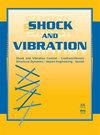Efficient Dynamic Performance Prediction of Railway Bridges Situated on Small-Radius Reverse Curves
IF 1.2
4区 工程技术
Q3 ACOUSTICS
引用次数: 0
Abstract
Bridges situated on small-radius reverse curves play a pivotal role within some railway networks, exerting influence over project-wide design progress. Typically, assessing the safety of bridge design parameters necessitates laborious vehicle-bridge dynamic coupling vibration numerical analysis or model experiments. To streamline the design process and enhance efficiency during the preliminary design phase, we propose an efficient method to assess the dynamic performance of bridges on small-radius reverse curves. This approach enables direct prediction of bridge dynamic performance based on design parameters, eliminating the need for numerical simulations and model experiments. We first develop a vehicle-bridge coupling vibration program grounded in train-curve bridge coupling vibration theory, validated using on-site measured data. Subsequently, through numerical simulation experiments, we evaluate 80 simply supported beam bridges on small-radius reverse curves under various operating conditions, generating ample dynamic response data for bridge pier tops and girders. These data are then compared with regulatory thresholds to assign dynamic performance labels. After identifying essential design parameters as data features using Fisher scores, we proceed to input these features into a support vector machine (SVM). Through supervised training with dynamic performance labels, this process empowers the SVM model to predict the dynamic performance of the bridge. Our results demonstrate that this method circumvents the need for detailed vehicle-bridge interaction analysis, yielding an impressive 86.9% accuracy in predicting dynamic performance and significantly boosting computational efficiency. Besides, the top five design parameters that significantly influence the prediction of bridge dynamic performance are obtained. This novel approach has the potential to expedite design assessments and enhance safety in railway bridge construction.位于小半径反向曲线上的铁路桥梁的高效动态性能预测
位于小半径反向曲线上的桥梁在一些铁路网中起着举足轻重的作用,对整个项目的设计进度产生影响。通常情况下,评估桥梁设计参数的安全性需要进行费力的车桥动态耦合振动数值分析或模型试验。为了简化设计流程,提高初步设计阶段的效率,我们提出了一种评估小半径反向曲线上桥梁动态性能的有效方法。这种方法可根据设计参数直接预测桥梁的动态性能,无需进行数值模拟和模型试验。我们首先根据列车-曲线桥梁耦合振动理论开发了车辆-桥梁耦合振动程序,并利用现场测量数据进行了验证。随后,通过数值模拟实验,我们评估了 80 座简单支撑梁桥在各种运行条件下的小半径反向曲线,为桥墩顶和梁体生成了大量的动态响应数据。然后将这些数据与法规阈值进行比较,以指定动态性能标签。在使用费舍尔评分将基本设计参数识别为数据特征后,我们继续将这些特征输入支持向量机 (SVM)。通过使用动态性能标签进行有监督的训练,这一过程增强了 SVM 模型预测桥梁动态性能的能力。我们的结果表明,这种方法无需进行详细的车辆与桥梁相互作用分析,动态性能预测准确率高达 86.9%,大大提高了计算效率。此外,我们还获得了对桥梁动态性能预测有重大影响的五大设计参数。这种新方法有望加快设计评估,提高铁路桥梁建设的安全性。
本文章由计算机程序翻译,如有差异,请以英文原文为准。
求助全文
约1分钟内获得全文
求助全文
来源期刊

Shock and Vibration
物理-工程:机械
CiteScore
3.40
自引率
6.20%
发文量
384
审稿时长
3 months
期刊介绍:
Shock and Vibration publishes papers on all aspects of shock and vibration, especially in relation to civil, mechanical and aerospace engineering applications, as well as transport, materials and geoscience. Papers may be theoretical or experimental, and either fundamental or highly applied.
 求助内容:
求助内容: 应助结果提醒方式:
应助结果提醒方式:


